VirtualBox Under Windows
This is page 2 of this article. Please see
page 1 first. This section assumes you have followed
that info!
Step 1 - Install VirtualBox.
Step 2 - Install VirtualBox Extension Pack.
Step 3 - Open VirtualBox. We are going to create our first
Virtual Machine.
Click on New
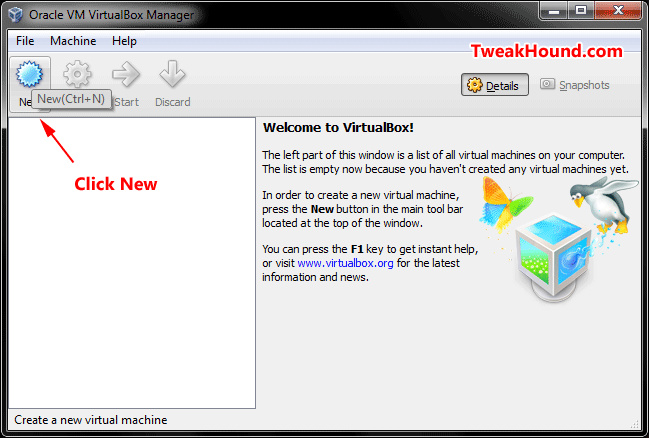
Click the Next button
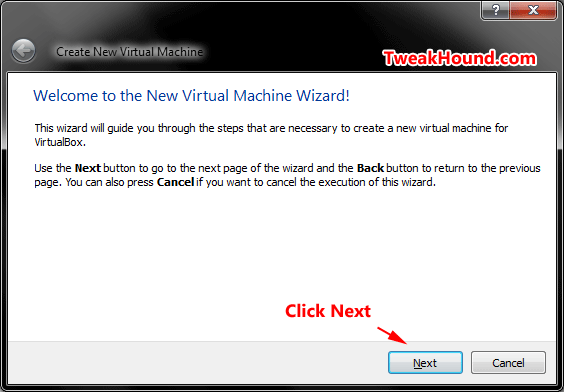
Pick a name, The OS, and the version. Then click the Next
button.
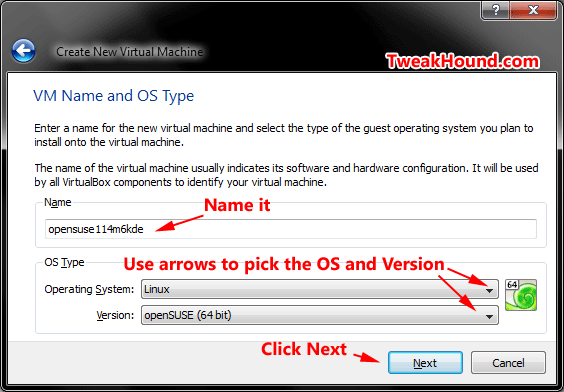
Decide on how much memory you want to give the host OS. The
more memory you give the better your Guest OS will run.
Click the Next button.
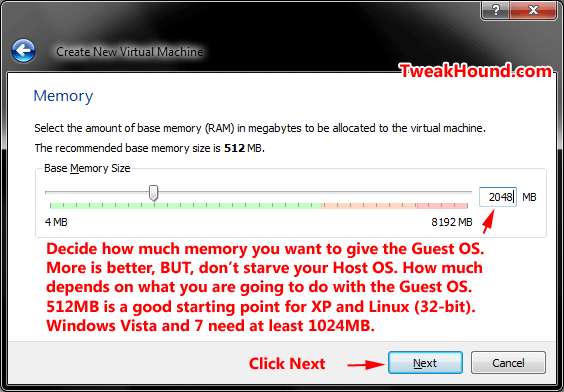
For a new install you will
Create new hard disk.
VirtualBox seems to choose 8GB as default for most Linux
distros. I recommend at least 10GB.
Click the Next button.
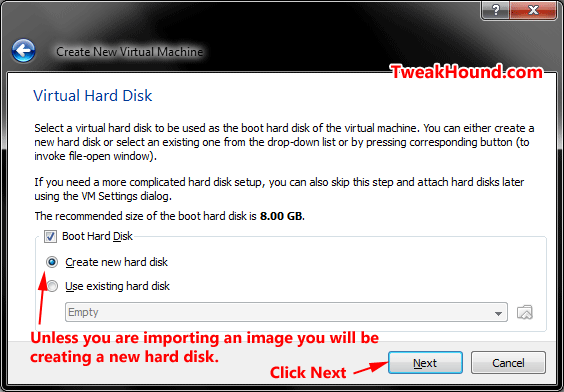
The Create New Virtual Disk Wizard comes up. Click the Next
button.
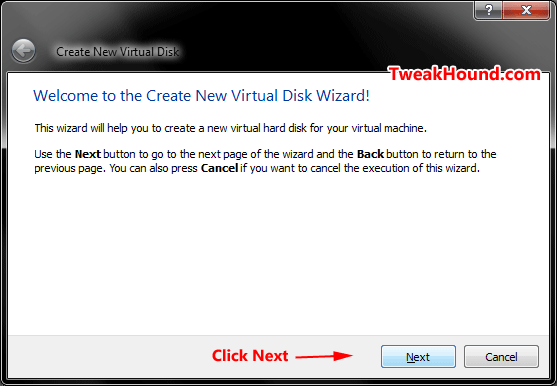
I recommend using Dynamically expanding storage if space is
at all a consideration.
Fixed-size is OK if not. Click the Next button.
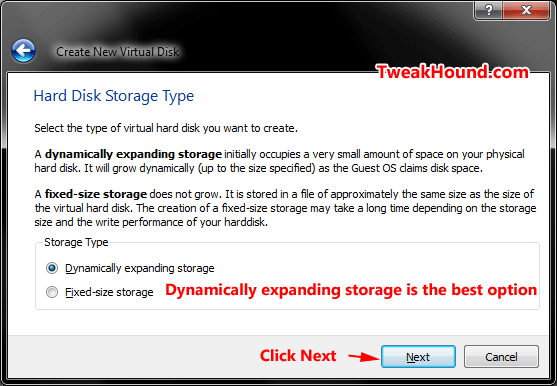
Here is where many folks get in to trouble, having to resize
a disk when space becomes an issue for the Guest OS.
For testing this usually isn't an issue.
If you are going to keep this OS around, make this as big as
you can afford to without going overboard.
Linux distros are pretty compact compared to Windows Vista &
7.
In this section you can choose an alternate location to
store your VM.
Click the Next button when you're finished.
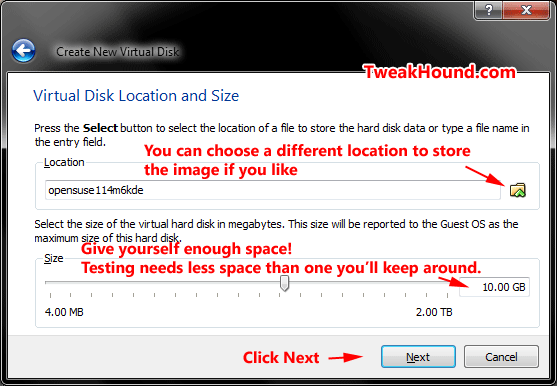
Everything look as you had intended? Click on the Finish
button.
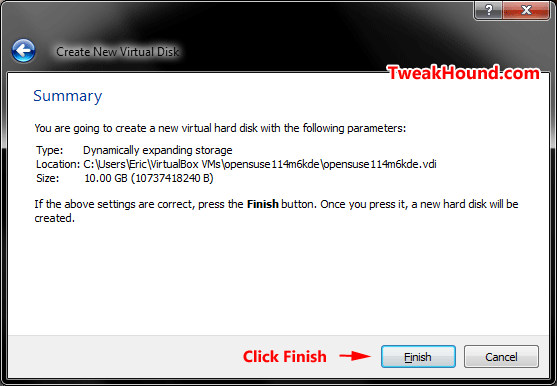
Everything look as you had intended? Click on the Finish
button
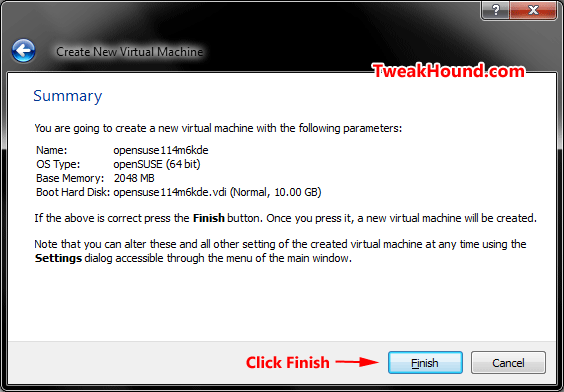
Don't click Start yet! We've got some more work to do. Click
the Settings button.
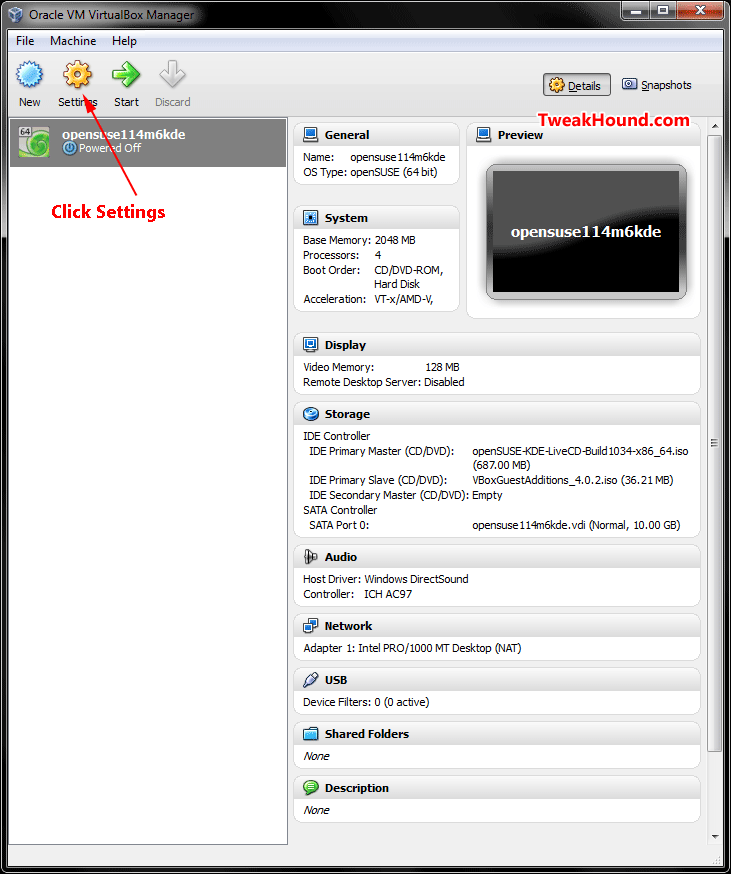
We started out in the General section. Click on System.
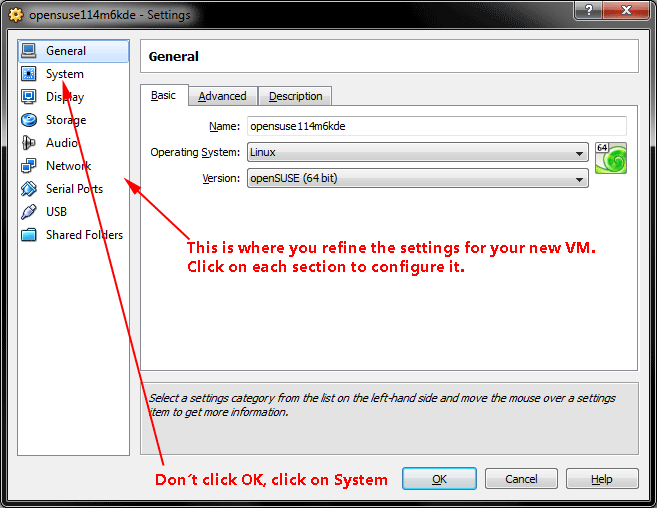
Configure your Boot Order. For install CD/DVD-Rom should be
first. Unless you need F6 drivers you don't need a floppy.
Select your Chipset next. As of this writing ICH9 is new.
If you intend on letting the Guest OS access multiple more
than one CPU/Core then you need to Enable I/O APIC.
UTC Time.
I don't understand the obsession of trying to screw with my clock. I don't care
what time it is somewhere else.
Uncheck this and it'll stick with the time on your computer.
Click on the Processor tab when you are done with this
section.
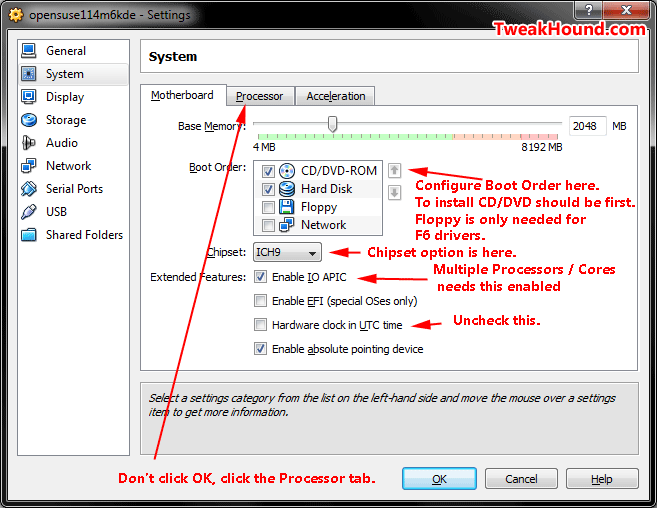
Adjust the number of processors/cores you want available to
the Guest OS.
PAE/NX - Here is what the VB manual says:
"In addition, the "Enable
PAE/NX" setting determines whether the PAE and NX capabilities of the host CPU
will be exposed to the virtual machine.
PAE stands for "Physical Address Extension".
Normally, if enabled and supported by the
operating system, then even a 32-bit x86 CPU can access more than 4 GB of RAM."
Well, this setting is actually more than that (Google / Wiki
it). My preference is to enable this on newer hardware.
When you're through with this section, click on Display.
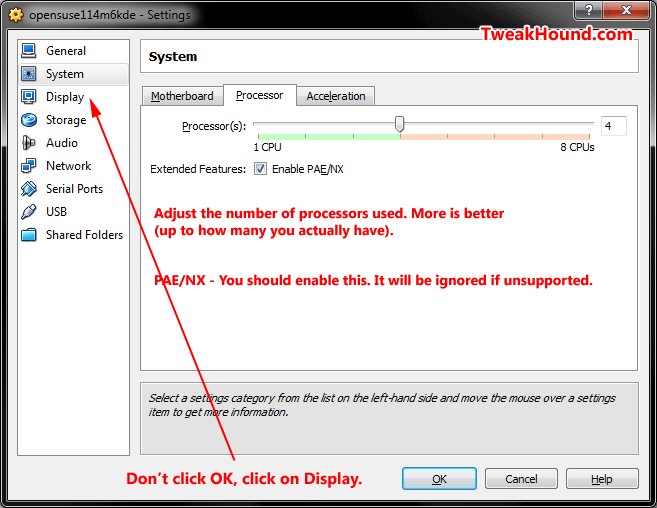
Adjust your Video Memory. If you have a video card with
256MB or more memory then crank it up!
Extended features - For Linux Guest OS I leave these
unchecked.
Click on Storage when you are through here.
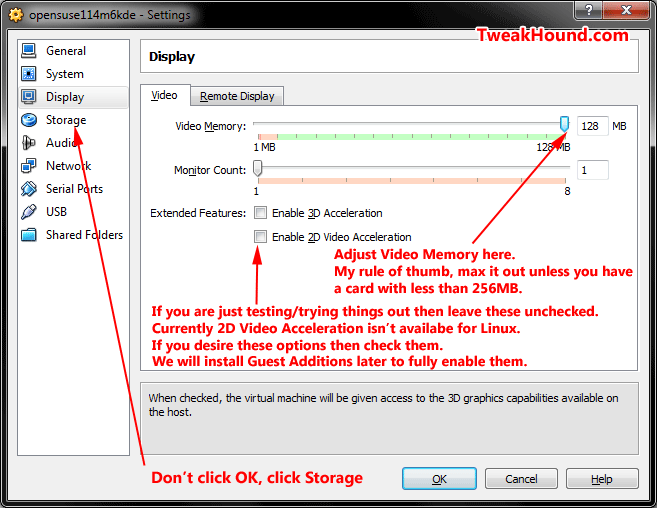
Add the ISO you downloaded to the IDE controller.
If you are going to install from CD/DVD then leave an empty
CD drive.
You can configure the controller type on the right side of
the screen.
*note for screen below. If the OS you are going to install
installs Guest Additions automatically you don't need
mount the VBoxGuestEditions iso. openSUSE installs it by
default (virtualbox-guest-tools).
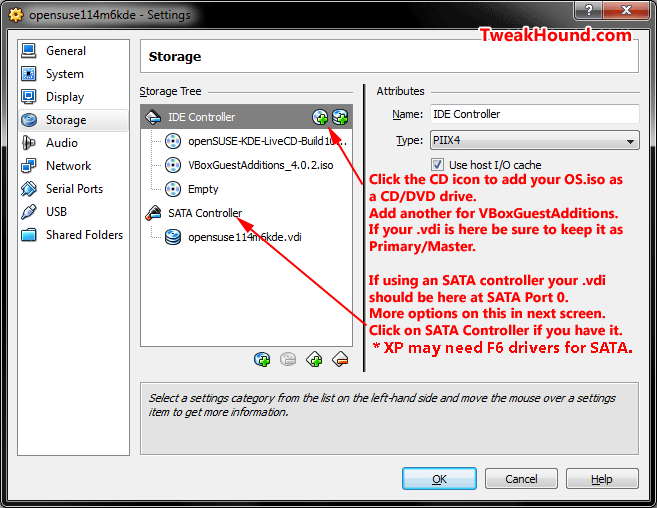
The SATA Controller:
-You need to have Use host I/O cache enabled.
-To use XP as a Guest OS you
may need F6 drivers. These are Intel RST drivers
(text mode).
-If your .vdi file is on the IDE Controller and you want it
on the SATA controller.
1 - Create an SATA Controller if one isn't there (below the
Storage Tree box).
2 - Delete the .vdi drive under the IDE Controller.
3 - Add the .vdi drive under the SATA Controller.
When you are through with this section click the OK button.
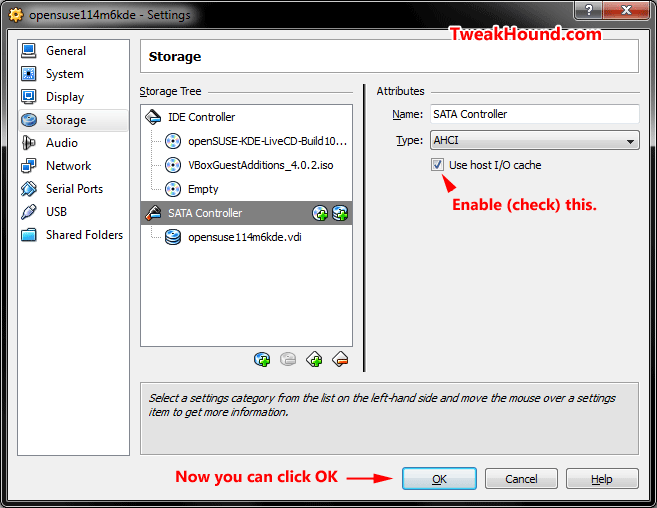
Click the Start button to get rolling!
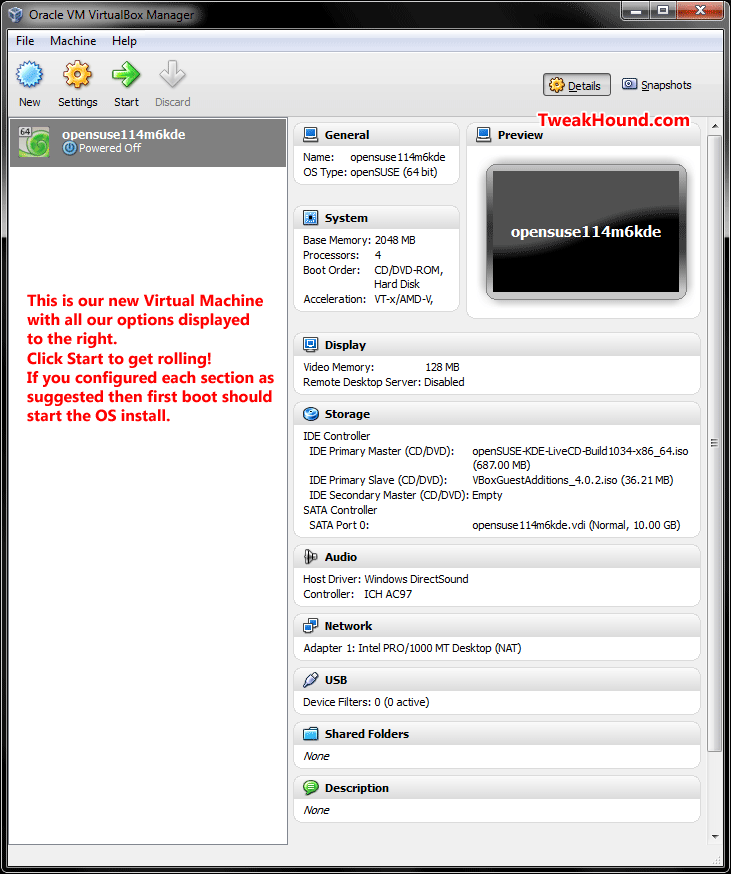
If your guest OS doesn't install Guest Editions by default
then install it after you update that OS.
Google search it if you don't know how. For example:
http://www.google.com/#sclient=psy&hl=en&q=ubuntu+10.10+virtualbox+guest+additions&aq=1&aqi=g5&aql=&oq=&pbx=1&fp=d9008d84f286047
From the command line, open or cd to the location where the
iso is (sudo or su): su ./VBoxLinuxAdditions.run
An example of 6 different VM's running under Windows 7.
Click the picture for a larger image.
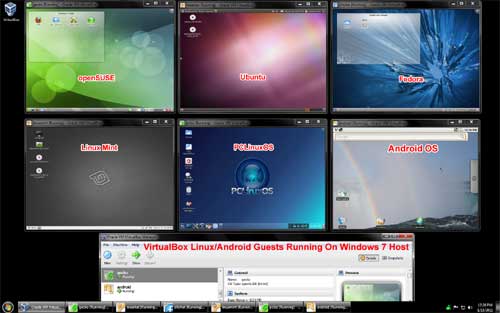
NEXT ->
Article Index
Page 1 -
Introduction
Page 2 -
VirtualBox Under Windows
Page 3 -
Using VirtualBox 4 in openSUSE (openSUSE Host, Windows XP
and Windows 7 Guests)
Tweaking Windows 7
Installing Windows 7
TweakHound's Super XP Tweaking Guide - SP3 Final
Tweaking Windows Vista
The Right Way To Install Windows XP
Installing Windows Vista
The
Freeware XP Machine
The Vista
Freeware Machine
Windows XP
Backup Strategies For Home Users
Windows Vista Backup Strategies For Home Users
Installing
Suse Linux 10.3
How To Samba With Suse 11.2 And Windows
iTunes,
iPod File Types & Quality
I use True Image 2011 for all my OS backups and Disk Director 11.0 for all my partitioning requirements.
TweakHound readers often get a discount off Acronis Products. Click the links for more info.